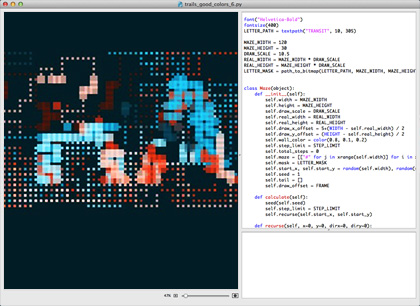

And, even more exciting, Nervous System wants to unleash their awesome tool onto the world with a cloud-based version of Floraform, currently being developed. They’re also looking into using to create 4D objects that change with time upon printing, such as their own Kinematics Dress. These videos show time lapses of the forms being 3D modeled, and they highlight the growth points in different colors.ģD Printing Industry discusses Nervous System’s next steps for Floraform: “Right now, they’ve mostly worked with edge-based growth, but they have a lot more to cover, including new para maters for controlling the direction, speed, and material properties of the growing object. You can watch the process through videos found on Nervous Systems blog and website. Digital gardening allows the studio to control and manipulate the growth process of the forms to create the most beautiful shapes to later print. Not only does Floraform create sculpture and jewelry works they also have computer elements called digital gardening. The edge-based forms are also some of the most popular and distinctive shapes in the collection. This is how the “brain flower” is formed. The last form is edge-based, which means that the form continues to grow from the edge. Instead, the form keeps growing an expanding line. Line-based forms also start as a single cell, but they never split. The point-based forms start growing from a single point, which them splits over time. When looking through the form creations of Floraform, we can see there are different types of forms being created, point-based, line-based, and edge-based. The figures they produce that have a ruffled shape are recreations of the Cockscomb or “brain flower.” Cockscomb is a mutation of Celosia that blooms densely and has tree-like blossoms.

Additionally, the studio wanted to recreate a flower called Cockscomb. Phototropism is when a plant bends in the direction of its light source and thigmotropism is when vines wrap themselves around another plant form. Therefore, every piece is unique.įloraform, also explores plant behaviors such as phototropism and thigmotropism. The design systems used to create these forms are generative because they have no fixed outcome. The items are sold at a range of prices, depending on the print material used. You can then purchase these products here. When the studio is satisfied with the computer model of these forms, they will 3D print them into sculptures and jewelry. “ We consider this work a kind of digital gardening, except instead of growing plants we’re cultivating algorithms” Nervous System, (2014) Floraform. The technology uses various growth rates, space, and time to create unique forms. Within the digital garden, you can explore biomechanics and how plant biology systems work. Using technology, the studio was able to simulate the growth of these plants and create a sort of digital garden. In 2014, Nervous System worked on a project called Floraform, which was inspired by the plant growth such as blooming flowers and growing leaves. The design studio says: “Our work at Nervous System combines scientific research, computer graphics, mathematics, and digital fabrication to explore a new paradigm of product design and manufacture.” Nervous Systems, (2016) Nervous System Projects. The studio is largely inspired by the natural world, but uses technology to realize their works.

Nervous System works as a generative design studio to create art that combines technology, science, and art.


 0 kommentar(er)
0 kommentar(er)
